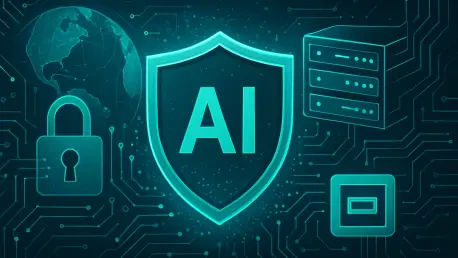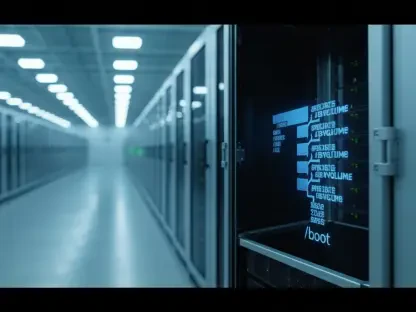In an era where cyber threats are becoming increasingly sophisticated and pervasive, Hewlett Packard Enterprise (HPE) has emerged with a bold vision for the future of cybersecurity, unveiled at the Black Hat conference in Las Vegas. This annual gathering of security experts and industry leaders serves as the perfect stage for HPE to showcase a transformative suite of AI-powered solutions designed to protect enterprise networks and data in hybrid environments. With cybercrime costs projected to soar into the trillions globally, the urgency for innovative defenses has never been greater. HPE’s latest announcements signal a significant shift, integrating advanced technologies and strategic acquisitions to address the evolving threat landscape. By combining cutting-edge AI tools with robust networking capabilities, the company aims to empower organizations to stay ahead of malicious actors. This development not only highlights HPE’s commitment to security but also sets a new benchmark for the industry, promising to reshape how businesses safeguard their digital assets.
Unveiling AI-Powered Innovations for Enterprise Protection
HPE’s showcase at the Black Hat conference centers on a groundbreaking integration of AI-driven cybersecurity tools, marking a pivotal moment for enterprise protection. The highlight of this unveiling is the fusion of Juniper Networks’ Mist AI technology with HPE’s Aruba Networking solutions, a synergy made possible through a monumental $14 billion acquisition. This powerful combination creates a unified portfolio that tackles the complexities of securing hybrid environments, where remote work and IoT devices have expanded the attack surface. The emphasis on AI allows for real-time threat detection and response, a critical need as cyberattacks grow in both frequency and sophistication. By embedding intelligent systems into network fabrics, HPE is equipping organizations with tools to predict and prevent breaches before they cause significant damage. This approach represents a departure from traditional, reactive security measures, positioning HPE as a frontrunner in proactive defense strategies for modern enterprises.
Beyond the integration of technologies, HPE has introduced an innovative AI-driven Secure Access Service Edge (SASE) copilot that redefines how security teams interact with complex network data. This tool leverages generative AI to offer a natural language interface, enabling professionals to query network behaviors and automate policy enforcement through conversational commands. Such functionality drastically cuts down response times to potential breaches, enhancing operational efficiency in high-stakes environments. The copilot addresses a critical pain point in cybersecurity: the overwhelming volume of data that often delays decision-making. By simplifying these interactions, HPE ensures that even teams with limited technical expertise can manage sophisticated systems effectively. Additionally, this innovation reflects a broader trend in the industry toward user-friendly security solutions, ensuring that advanced technology does not come at the cost of accessibility or usability for enterprise staff.
Strengthening Data Resiliency with Advanced Solutions
Another cornerstone of HPE’s strategy at the conference is the enhancement of data protection through updates to its Zerto platform and GreenLake cloud services. The Zerto updates focus on immutable storage and rapid ransomware recovery, addressing the growing menace of ransomware attacks that can cripple business operations. These features ensure continuity by allowing organizations to restore critical data swiftly after an incident, minimizing downtime and financial loss. Meanwhile, GreenLake introduces AI-optimized data protection with automated classification and encryption of sensitive information. This multi-layered approach is particularly vital in hybrid cloud setups, where data breaches can have devastating consequences. By prioritizing resiliency, HPE demonstrates an understanding of the escalating regulatory pressures, such as GDPR, and the need for robust safeguards in an age of rapid digital transformation. These advancements cater to businesses seeking comprehensive protection across diverse environments.
Further bolstering its data security offerings, HPE emphasizes adaptability to dynamic attack vectors through machine learning and behavioral analytics. The integration of Juniper’s technology extends zero-trust network access to campus environments, a critical step given the vulnerabilities introduced by IoT proliferation and remote workforces. Machine learning algorithms analyze traffic patterns across wired, wireless, and wide-area networks to detect anomalies that could signal insider threats or external attacks. This proactive stance, enhanced by partnerships with leading endpoint security providers, ensures that potential risks are identified and mitigated before they escalate. The focus on zero-trust principles reflects a growing industry consensus that traditional perimeter defenses are no longer sufficient. HPE’s commitment to real-time monitoring and adaptive responses positions its solutions as essential tools for organizations navigating the complexities of modern cybersecurity challenges.
Industry Impact and Future Challenges in AI Security
The industry response to HPE’s announcements at the Black Hat conference has been overwhelmingly positive, with cybersecurity experts and influencers expressing enthusiasm for the seamless integration of AI into threat hunting and network management. Social media platforms buzz with discussions about how these innovations could address the data explosion driven by AI adoption, particularly in sectors like retail where real-time protection of IoT data at the edge is paramount. Analysts see the timing of this launch as strategic, positioning HPE to compete with major players in the $50 billion cybersecurity market by embedding AI deeply into its offerings. The versatility of these solutions across diverse industries underscores their potential to redefine security standards. As organizations grapple with increasingly complex threats, HPE’s focus on intelligent, automated defenses resonates as a timely and necessary evolution in the fight against cybercrime.
Despite the optimism surrounding these advancements, significant challenges lie ahead in ensuring the effectiveness of AI-driven security systems. A key concern is the need to train AI models on diverse datasets to prevent biases that could lead to false positives or missed threats, potentially undermining trust in these tools. HPE’s dedication to open standards and interoperability offers a promising path forward, fostering a collaborative ecosystem that could enhance collective security through alliances. This forward-thinking approach signals a broader paradigm shift in cybersecurity, moving away from static defenses toward agile, intelligence-driven strategies. While the road ahead may present hurdles, HPE’s proactive stance and focus on adaptability suggest a readiness to tackle these issues head-on, ensuring that its solutions remain relevant and effective in an ever-changing threat landscape.
Reflecting on a Transformative Milestone
Looking back at the Black Hat conference, HPE’s unveiling of AI-powered cybersecurity solutions stood as a defining moment for the industry. The integration of Juniper Networks’ technology with HPE’s robust portfolio delivered a compelling vision of automated threat detection, enhanced data protection, and zero-trust capabilities tailored to contemporary challenges. For organizations seeking to fortify their defenses, the next steps involve exploring how these tools can be seamlessly incorporated into existing systems while staying vigilant about potential AI biases. Embracing partnerships and open standards could further amplify the impact of these innovations, creating a unified front against cyber threats. As the landscape continues to evolve, staying informed about emerging trends and investing in adaptable, intelligent security measures will be crucial for businesses aiming to safeguard their digital future. HPE’s contributions marked a significant stride, setting the stage for ongoing advancements in enterprise protection.









